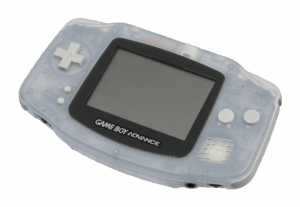
The Game Boy Advance (GBA) was a 32-bit handheld video game console developed and manufactured by Nintendo. Released in 2001, it was the successor to the Game Boy Color and marked a significant leap in graphics and processing power for Nintendo’s portable gaming line.
Key features
- Powerful hardware: The GBA featured a 32-bit ARM7TDMI processor, allowing for graphics and gameplay that rivaled the 16-bit Super Nintendo Entertainment System (SNES). It had a larger screen and a more modern, horizontal “landscape” design compared to previous Game Boy models.
- Color display: Unlike the monochrome Game Boy, the GBA had a color screen capable of displaying up to 32,768 colors. However, the original model’s screen was reflective and not backlit, making it difficult to play in low-light conditions.
- Backward compatibility: The GBA was compatible with the entire libraries of both the original Game Boy and the Game Boy Color, allowing users to carry forward their entire collection of games.
- Connectivity: Using a “Game Link Cable” or a later Wireless Adapter accessory, up to four players could connect multiple GBA units for multiplayer gaming. It could also connect to the Nintendo GameCube via a link cable for special features in some games.
Models and revisions
Over its lifespan, the GBA received several notable redesigns:
- Game Boy Advance SP (2003): A smaller, lighter, and more portable clamshell version of the GBA. The SP was the first Game Boy to feature a rechargeable battery and a lit screen (initially frontlit, later backlit).
- Game Boy Micro (2005): An even smaller, more compact version of the GBA. It featured a bright, backlit screen but lacked backward compatibility with older Game Boy games due to its small size. The Micro was released late in the GBA’s life and was overshadowed by the Nintendo DS.